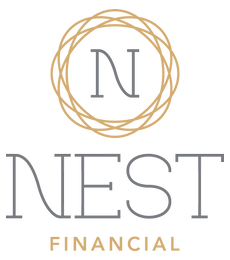Year end Tax Planning seems to always happen like this… There are 2 weeks left in the year…Oh I need to call my financial advisor and tax advisor and see what I can do to reduce my taxes!
We at Nest Financial get this every year, right during the holidays, we are encounter more and more people asking this question. You probably should have started planning months ago, but that’s alright.
We’ve listed a few strategies that have worked for individuals and business owners. Ask a financial advisor or tax professional to find out if any of them work for you. Don’t have either? We do! Email us at info@nestfinancial.net to get connected.
Is there still time to apply these strategies? Possibly. It depends on how quickly you get started so let’s not waste anymore time and begin.

Increase tax-deferred retirement savings contributions
Some end of year tax planning include: Traditional IRAs, traditional 401(k), SEP IRAs, 403(b), just to name a few are all accounts that you can contribute. In general, contributing to these tax deferred retirement accounts allows you to decrease your income for the year the contributions were made. However, keep in mind that there are limits to how much you can contribute. You can view these limits on the IRS.gov website.
If you’re a business owner, work for yourself and need a quick way to defer some income because you’re facing a big tax bill for whatever reason, consider opening and funding a SEP IRA. For next year (with more time), you can look into opening a solo 401(k) – a 401(k) plan for a business owner with no full-time employees.
Defer income to next year
Another end of year tax strategy is deferring income. This strategy can apply to business owners or even investors. As a business owner, you could delay invoicing clients to the following year. As an investor, say you have a deal that’s about to pay out at the end of this year. Perhaps you can defer a portion of the payment to next year (even if just to Jan 1st) so that the income would be split between two years, therefore lowering your taxable income this year.
Tax loss harvesting
A popular way to do some year end tax planning is tax loss harvesting. This has been a wild year in the markets. If you experienced a downturn, you’re not alone. The bright side is that you can turn those losses into tax winnings. The strategy is to sell investments that are down, buy them back (after 31 days to prevent triggering the Wash Sale rule) and then write off the losses against investment income.
However, be aware that these losses can offset only $3,000 of ordinary income like money you’ve earned through work. This strategy can get complex so it would be a good idea to seek professional guidance.

Oil and gas investments
About 100 years ago, around the boom of automobile manufacturing in the US, oil and gas companies did a fine job in lobbying tax law. Investing in these companies offer massive tax advantages.
In general, if a person is facing a tax bill from capital gains, Roth conversion, employee stock option liquidations or other income sources, they can invest in an oil and gas fund and write off about 90% of their investment amount.
That means if you invest $100,000, $90,000 can be deducted dollar-for-dollar against your income. If you’re in the 35% tax bracket, you’re saving nearly $32,000 that would have otherwise been paid to uncle Sam. In addition, a portion of the distributions paid from this investment are tax deductible. Be aware that this type of investment isn’t as simple as buying Exxon stock in your brokerage account and is definitely not for everyone.
The absolute best strategy is simply planning
At NEST we have seen a need for more robust short-term and long-term planning. We’ve enhanced our services to bring you just that. The strategies mentioned are a few you could possibly implement at the last minute. With more time, there are several more that could transform your life. (I know this sounds a bit dramatic but it’s true!)
Curious to learn more? Give us a call. We’ll be happy to chat with you. 512-944-4882

Gloria Park
CFP® professional and Managing Partner at NEST
Find us on:
DISCLAIMER: The above general discussion is provided for background information only. This information is not intended to be individual advice. Prospective participants should consult with their personal tax professional regarding the applicability and effect of any and all benefits for their own personal tax situation. Certain investments are only available to accredited investors. In addition, tax laws change from time to time and there is no guarantee regarding the interpretation of any tax laws. Investing in oil and gas is highly speculative and could result in substantial losses. There are no guarantees that any returns will be achieved. Potential investors should consult their attorney, accountant, and financial advisors before investing in oil and gas.





